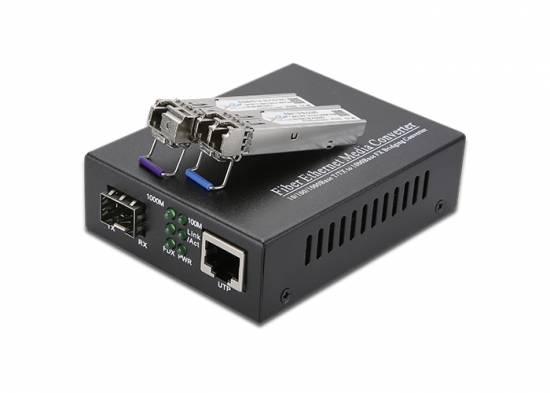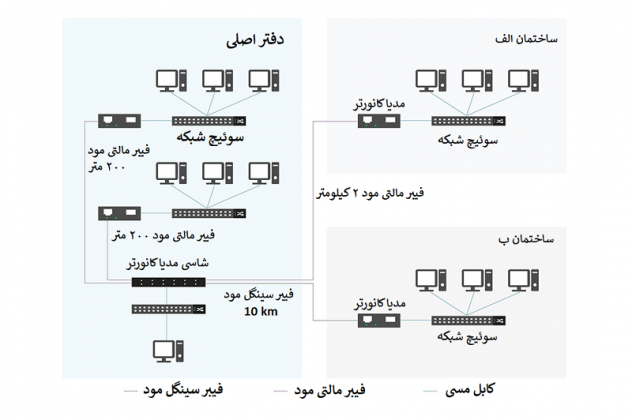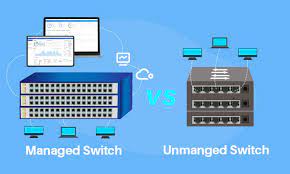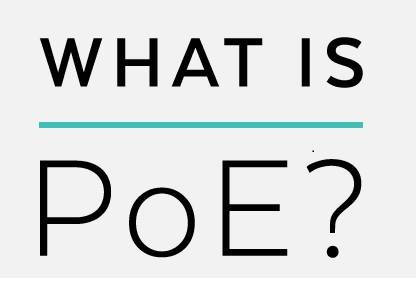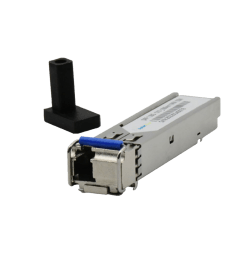What is a media converter and what is its use?
Media converter or optical fiber converter is an affordable and flexible device designed to implement and optimize fiber links in any network. Due to their high flexibility, media converters are a very suitable option for improving network performance.
If the distance between two network devices is greater than the transmission distance of copper cabling, it is necessary to have a fiber optic connection. Media converter is used in metropolitan networks and transfers data to customers and institutions.
Connections are copper wire to fiber, or fiber to fiber.
Copper to fiber optic converter
Copper-to-fiber conversion, performed by a media converter, connects two network devices that have copper ports over long distances using fiber optic cabling. In this way, it protects data from noise and interference. These devices enable connection to network devices, high-speed network, Gig and 10G; TDM devices are used to develop TDM telecommunication protocols of copper connections; Serial-to-fiber devices also enable the extension of fiber to copper protocol serial connections.
Fiber to fiber converter
The media converter also enables fiber-to-fiber conversion from multimode fiber to single-mode fiber. The media converter converts a dual fiber link to single fiber using bidirectional data flow (BIDI) and supports wavelength conversion. A multi-mode to single-mode converter is usually needed when inexpensive legacy equipment uses multi-mode ports, but it is necessary to connect to single-mode devices.
Features of Media Converter
It expands network distances by converting UTP to fiber and expanding fiber links
It prevents investment in existing devices
Extends the potential of existing fiber with WDM wavelength
Types of fiber optic converter based on performance
There are types of optical fiber converters or media converters, managed, unmanaged, PoE, stand-alone, chassis-based, mini and industrial media converters.
Managed fiber optic converter
A managed fiber optic switch provides network monitoring, fault detection, and remote management functionality, allowing network administrators complete control over data, bandwidth, and data traffic. A managed fiber optic switch is more expensive than a non-managed switch, and due to security Their reliability and better management are used for more complex environments such as large data centers and enterprise networks.
Unmanaged fiber optic converter
Unmanaged media converters are plug & play type and are very easy to install and use for beginners. It provides a simple connection between devices but does not provide performance monitoring and management.
PoE fiber optic converter
The PoE fiber optic converter is used to develop reliable and cost-effective fiber transmission distances for PoE-enabled devices, providing the electrical power required for the devices through the same existing copper wires for data transmission. These media converters can be used to power IP phones, video conferencing equipment, IP cameras, and Wi-Fi devices through copper wire cabling.
Independent fiber optic converter
Independent devices have a small size and simple installation, and save the price and installation space. These devices are suitable in environments that have limited space, such as telecommunication booths or distribution boxes.
Chassis based fiber optic converter
Chassis-based converters have several independent media converters and a chassis with the ability to accommodate multiple converters. These devices are used in large networks, such as data centers.
Industrial fiber optic converter
The industrial media converter is specially designed for harsh environments and enables media conversion at temperatures between -40 ℃ and +85 ℃, severe shock and vibration. They are generally used in building automation, oil and gas drilling and mining, traffic management, weather forecasting and other industrial and outdoor applications.
Commercial optical fiber converter
Commercial fiber optic converters with an operating temperature of -10℃ to 55℃ are designed for typical office environments and data centers where the temperature is controlled.
Mini fiber optic converter
Mini media converter chips are better than standard media converter chips. Its advantage is that it has a DIP (two-in-line package) switch function to meet different needs. Due to its small size, it is welcomed in large network environments.
New applications for fiber optic converters
Fiber optic converters are remotely controlled and have multi-port switch configurations
DM wavelength conversion to increase bandwidth capacity
Facilitate fiber to the desktop.
مدیا کانورتور چی

